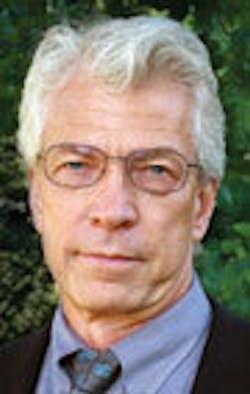Imaging for art’s sake
Cast-shadow analysis, occluding-contour algorithms, and uncalibrated reconstruction of 3-D space are image-processing techniques typically associated with industrial machine-vision applications. Yet these techniques can be applied to other applications in very powerful ways, including analysis of images created by visual artists. In art history, for example, critics have long debated how masters such as Caravaggio, Masaccio, and Georges de la Tour created their pictorial perspective, and some have challenged the accuracy of how the effects of light are portrayed.
In his article, David Stork at Ricoh Innovation shows how vision algorithms combine with both computer graphics and knowledge of art history to answer these questions. To study Magdalen with the Smoking Flame by de la Tour, Stork and a colleague used an occluding-contour algorithm to compute the direction of light striking the painted surface of a young woman. The effects of the light were accurately computed by the algorithm and agreed well with the location of the light source-a candle. As a result, Stork verified the power of the algorithm, confirming de la Tour’s mastery in rendering shapes and highlights.
VISION ON THE EDGE
Edge detection is a common technique employed by both investigators of art history and integrators of machine-vision systems. As editor Andy Wilson writes in our Technology Trends section, new edge-detection algorithms that use spline interpolation are being incorporated into the latest generation of machine-vision software. And, this month’s cover depicts the results of integrating such software with a new smart camera to sort and check colored bottles.
Each succeeding generation of software and hardware adds to the scope of applications that can be served by machine vision and image processing. This fact is illustrated with articles on PCB solder-joint inspection, robotic correction of defective dashboard tubes, and inspection of gold jewelry. The growing market for innovative sensors in automotive applications is also explored in an article. And our interview with Robert Massen of Baumer Inspection shows how highly automated and specialized inspection systems can result from the marriage of expertise in vision and production machinery.
Among growing markets for machine vision is surveillance, the subject of an article by Sven Fleck at SmartSurv. He describes a distributed, smart-camera-based system that captures events in real time in an integrated 3-D computer graphics model. Finally, we look into the future with an article by Andy Wilson exploring the possible development of a high-speed camera/frame-grabber interface that may succeed Camera Link.
Both the future and the past can be seen at VISION 2007, to be held at Messe Stuttgart’s new exhibition hall in Stuttgart, Germany, Nov. 6-8. Featuring more than 200 exhibitors, 5000 visitors, technical presentations, and networking events, the show takes place in a lovely city with first-class museums full of old masters. A few show visitors may even wish to admire the creations of masters who really understood the effects that lighting can play in any painting or indeed in developing machine-vision applications.
W. Conard Holton
Editor in Chief
[email protected]

